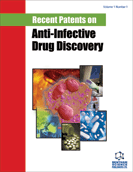Abstract
The phenothiazines are neuroleptic drugs that have long been known to have antimycobacterial activity, in vitro. Of the various commercially available phenothiazines, thioridazine, chlorpromazine and trifluoperazine are most active against mycobacteria, in vitro. Their MICs for Mycobacterium tuberculosis are in the 8-16 μg/ml range and MICs for Mycobacterium avium in the 10-32 μg/ml range, depending on methods and media. These concentrations cannot be safely attained in humans, where maximum serum concentrations are 0.5 μg/ml (thioridazine) to 1 μg/ml (chlorpromazine) or 4 μg/ml (trifluoperazine). Phenothiazines still have potential as antimycobacterial drugs because they accumulate in macrophages; concentrations inside macrophages are at least 10 fold higher than in serum. When applied to mycobacteria inside macrophages, concentrations as low as 0.1 μg/ml (thioridazine) or 0.1-3.6 μg/ml (chlorpromazine) kill phagocytized M. tuberculosis and M. avium in 3-7 days. Owing to their multiple and novel drug targets, phenothiazine resistance has not been observed. The drug targets and less toxic phenothiazine derivatives (patents include WO2005105145A and WO2010122012A) provide excellent patentable potentials. Thioridazine itself may be patented as “new use”. New drugs for treatment of mycobacterial disease, most notable multidrug- and extensively drug-resistant tuberculosis, are urgently needed; phenothiazines and their targets should be exploited for this use.
Keywords: Chlorpromazine, mycobacteria, Mycobacterium avium, nontuberculous mycobacteria, tuberculosis, Phenothiazines, thioridazine, Trifluoperazine, menaquinone oxidoreductase, Mycobacterium leprae
 8
8





















